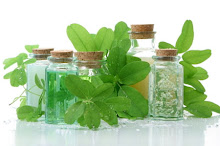
Often times it's just really hard to decide 10 times a day (when they ask) what to feed your kids that is semi- healthy. I've learned that my kids will eat anything I put into a "shake" as they call it. I have many different versions but I found one today they loved, if you're brave you can try it too:)
Coconut milk smoothie
One can coconut milk
One box soft tofu (I find mine in the little asian section right after the produce at winco, mori-nu silken tofu in a little box)
1/2 cup juice concentrate, or more if it needs it. (Great source of protein to start off the day)
1 packet powdered super food or you could put a swig of liquid flax seed oil(omega 3's for little kid bodies), or powedered vitamins, sometimes found at the health section.
Now I know tofu? powedered super food? It's pretty out there and I have to admit that I don't usually go crazy like that but my body's been reacting a lot lately to unhealthy food so I've been a little more fanatical. Also I was amazed at how much my kids actually liked this smoothie and how long it kept us full. Okay and about the green or super foods here's a little info:
Plant Power in Small Packages
When we talk about "green foods," we’re referring to a group of foods that includes young cereal grasses like barley grass and wheat grass, as well a blue-green algae known as BGA. Nutritionally, they are close cousins to dark green leafy vegetables, but offer far greater levels of "nutrient density." In other words, an ounce of these concentrated green foods contains much more of the beneficial phytonutrients found in an ounce of green vegetables.
The results of many experimental studies show that green foods have marked beneficial effects on cholesterol, blood pressure, immune response and cancer prevention. These effects are attributed in part to their high concentrations of chlorophyll.
Chlorophyll, the phytochemical that gives leaves, plants and algae their green hues, is the plant equivalent of the oxygen-carrying red pigment hemoglobin in red blood cells. Dietary chlorophyll inhibits disease bacteria and exerts therapeutic effects on bad breath and internal odors.
Blue-Green Algae (BGA): Spirulina, Chlorella and more
The single-celled plants known as blue-green algae (BGA) are sold in health food stores as superior sources of protein, chlorophyll, carotenoid antioxidants, vitamins, minerals and disease-preventive phytonutrients. There are several types of BGAs, the most popular being spirulina and chlorella.
The existing research, while lacking in many regards, suggests that BGAs exert some significant and perhaps unique preventive-health effects, most likely due to their polysaccharides, antioxidants, nucleic acids, and peptides. Preliminary evidence suggests that they have the following benefits:
Spirulina inhibits the infectious power of many viruses—including HIV, flu, mumps, enterovirus, measles, and herpes—probably because a sulfated polysaccharide called calcium spirulan prevents viruses from entering human cells.
Chlorella helps prevent cancer and the growth of tumors, probably because its glycoproteins enhance the migration of T cells to tumor sites
Chlorella binds to toxic heavy metals and dioxin and helps eliminate them from the body.
Chlorella protects the intestinal lining against peptic ulcers
Both Spirulina and Chlorella:
Help diminish allergies such as hay fever
Help protect the liver from toxins
Reduce blood pressure and cholesterol
Help control symptoms of ulcerative colitis
Exert strong antioxidant and anti-inflammatory effects
BGAs are rich in essential fatty acids, phenolic antioxidants, chlorophyll, B vitamins, carotenoids and minerals like calcium, iron, magnesium, manganese, potassium and zinc. BGAs—especially spirulina—are also good sources of gamma linolenic acid (GLA), an omega-6 fatty acid with many healthful properties, which some people’s bodies have trouble producing, and which is lacking in the standard American diet.
Anyway you can buy these super food or green foods in many forms I just buy it powdered and it's easy to add to things, it even has a lemon-lime flavor so they think it's good. Obviously the superfoods could be excluded and you would still have a healthy yummy smoothie and no you don't really taste the tofu, I myself am not a huge tofu fan but when it is sometimes mixed into things it makes them creamy, the juice concetrate really helps to sink into it and absorb the taste. I am going to experiment some more so if I have some more yummy options I'll let you know. My 2 cents.




















